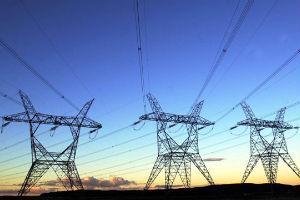 Lowering the allowed levels of kilowatt per square meter of construction and implementing incentives in customs tariffs, are ideas to design bills aimed at minimizing electricity consumption.
Lowering the allowed levels of kilowatt per square meter of construction and implementing incentives in customs tariffs, are ideas to design bills aimed at minimizing electricity consumption.
by: Alfredo Sotolongo*
I have just returned from Panama where, with other colleagues in the industry, we met with the Minister of the National Secretariat of Energy of that country, Eng. Juan M. Urriola. The purpose of the meeting was to show you the high percentage that air conditioning, refrigeration and ventilation systems represent in the consumption of electrical energy in commercial buildings. In our tropical countries this figure can reach up to 68% of total energy consumption and therefore of demand; which the Minister was well aware of.
In addition, we share all the ecological and economic benefits of saving electricity. We discuss the importance of energy savings, not only for oil-producing countries but especially for non-producers who are forced to import all the fuels they consume for electricity generation, including those that are lucky enough to have hydroelectric plants and still generate electricity using fossil fuels.
We take this opportunity to ask you for guidance on how to channel bills that contribute to minimizing electricity consumption. We not only talk about the use of incentives in customs tariffs but also limiting the Kw consumed per square meter of construction.
Case Studies
An example of an incentive in customs tariffs is not to add levies on high-reflection glass and yet impose high tariffs on simple, lower-reflection glasses. High reflection glass has sometimes managed to reduce the thermal capacity from 30 tons to 25 tons in office areas of approximately 1,000 square meters.
As the owner has the obligation to maintain a maximum consumption per square meter, the consulting engineer who designs the air conditioning system must apply all available systems and equipment to achieve this purpose, among which are:
A) Exchange of enthalpy between hot and humid outside air that is introduced for ventilation and cold and dry extraction air. This system is very effective in tropical countries with a return on investment of less than a year, depending on the cost of electricity.
B) Systems of variable volume either in the cooler, water pumps and air movement. The use of variable frequency drives allows to take advantage of the laws of affinity and only supply the air conditioning system with the minimum energy necessary to compensate for the concurrent thermal load at all times, which reduces electricity consumption exponentially. For example, if in partial loads the required flow rate drops to 50%, when using variable frequency drives the consumption drops to 12.5%
C) Minimize outdoor air using particle control along with medium efficiency filters that according to ASHRAE 62.1-2010, allows more air to be recirculated and less outside air to be introduced.
D) Use BMS control systems to integrate all the mechanical and electrical systems of the building, monitor the total electricity consumption in order to minimize consumption and demand. In addition, facilitate preventive maintenance programs which contributes to the optimal operation of all systems, an important detail in the reduction of energy waste.
Fortunately and to our pride, there is already a movement in Panama organized by a group of industry colleagues composed of consulting engineers and air conditioning contractors making efforts to achieve laws in the National Assembly that lead to these goals. In the coming days, the Ministers of Energy of several countries will meet in Panama to address these issues, exchange ideas and aim to achieve technical and economic cooperation agreements that contribute to reducing energy consumption.
We have faith that this culture of energy saving will spread and gain strength in all those countries that are not yet creating tax incentives and laws that limit waste.
If you need more information on any of the topics covered in this column, please contact me at the email [email protected]
* President of Protec, Inc., is certified as a professional engineer in Puerto Rico and the state of Florida; has more than 40 years of experience in the application and sale of systems and equipment for energy conservation. He is a member of ASME (American Society of Mechanical Engineers), AEE (Association of Energy Engineers), ASHRAE and was president of the Miami chapter of that association.













